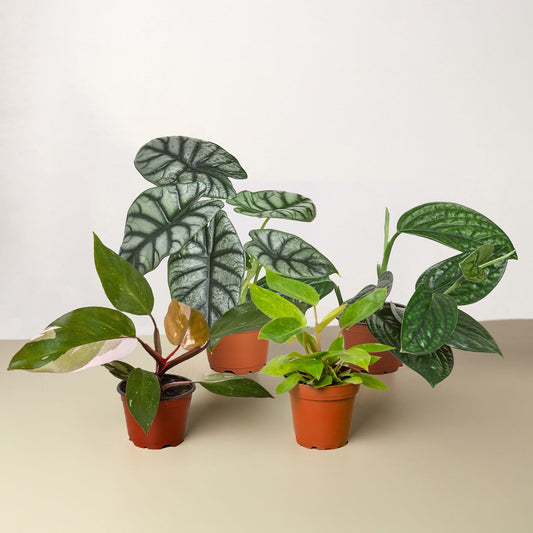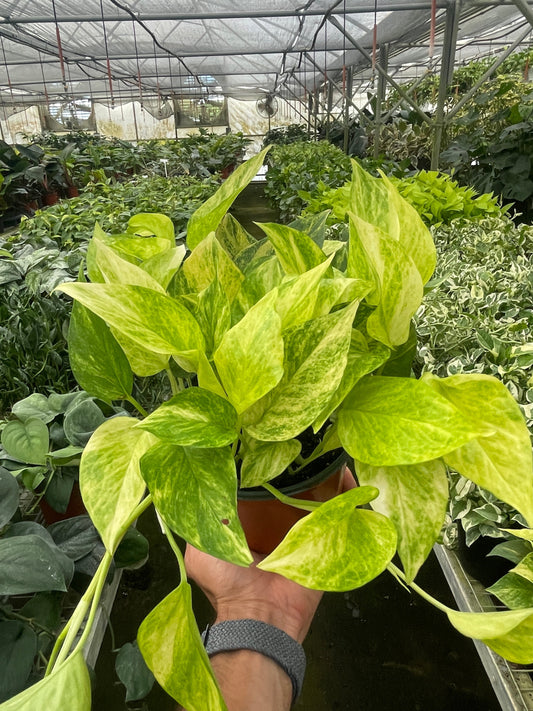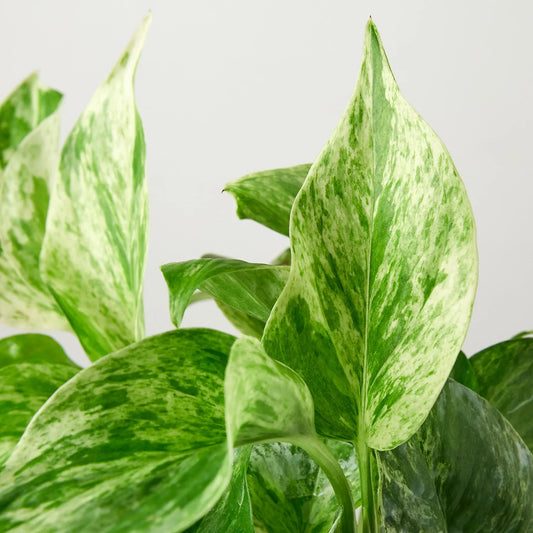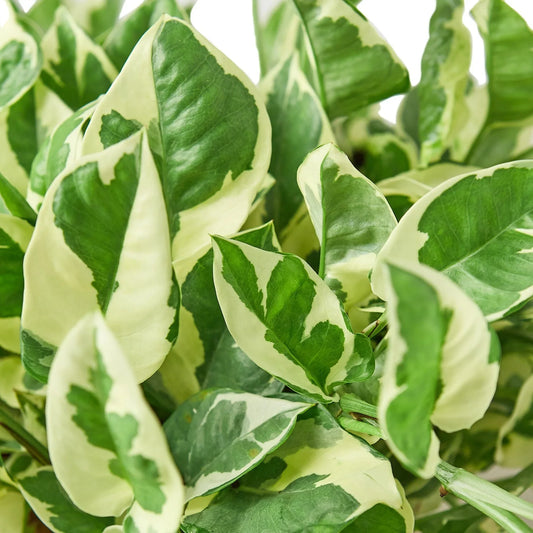How to Grow and Care for Burro's Tails
Cafe Planta Team
Burro's Tails are like the laid-back cousins of the succulent family, perfect for anyone who loves a plant that practically takes care of itself. With their cascading, tail-like stems, they add a touch of whimsy to any home. If you're looking to add a bit of effortless green to your indoor space, this charming plant might just be your new best friend.
This guide will walk you through everything you need to know about growing and caring for Burro's Tails. From potting and soil tips to dealing with pests and creating a stylish plant nook, I'll cover all the bases to ensure your plant thrives in its new home.
Getting to Know Your Burro's Tail
Before we get into the nitty-gritty of care, let's chat about what makes Burro's Tails so special. Also known as Sedum morganianum, this succulent is native to southern Mexico and Honduras. Its iconic trailing stems are packed with plump, teardrop-shaped leaves that give it that signature tail-like appearance.
Burro's Tails are pretty low-maintenance, which makes them a favorite among plant lovers. They don’t require constant attention and tend to thrive on a bit of neglect. But just like a good friend, they still need some basic care to stay happy and healthy.
This succulent is ideal for hanging baskets or on high shelves where its stems can drape beautifully. The leaves are quite delicate, so handle them with care to avoid breakage. With the right conditions, your Burro's Tail can grow up to four feet long, turning into a stunning focal point in your home.
Choosing the Right Location
Location is everything when it comes to keeping your Burro's Tail happy. This plant loves bright, indirect sunlight. Think of it like a sunbather who prefers to stay under an umbrella. Too much direct sun can scorch its leaves, while too little light will make it leggy and sparse.
Try placing your Burro's Tail near a south or east-facing window where it can soak up plenty of light without getting burned. If you notice the leaves looking pale or stretching out, it might be a sign that your plant needs more light.
In my own home, I have my Burro's Tail hanging in a macramé holder by a large window. It's not only a great way to show off its long, trailing stems, but it also ensures it gets just the right amount of light. If your home doesn't have the perfect spot, consider using a grow light to supplement natural light.
Perfecting the Potting Mix
Burro's Tails are succulents, which means they need well-draining soil to prevent root rot. A cactus or succulent mix from your local garden center is usually a safe bet. If you're feeling adventurous, you can also mix your own by combining potting soil with sand or perlite to improve drainage.
Here's a simple recipe for a homemade succulent mix:
- 2 parts potting soil
- 1 part sand
- 1 part perlite or pumice
This combination ensures that water can flow freely through the soil, allowing the roots to breathe. Remember, Burro's Tails don't like to sit in wet soil, so be sure your pot has drainage holes.
I once made the mistake of potting my Burro's Tail in regular potting soil without adding sand. Let's just say it didn't end well. The poor thing was waterlogged, and it took a while for it to bounce back. Lesson learned!
Watering Wisely
Watering is one of the trickiest parts of caring for a Burro's Tail. These plants are drought-tolerant and prefer to dry out completely between waterings. Overwatering is a common mistake that can lead to root rot, so it's better to err on the side of caution.
During the growing season (spring and summer), water your Burro's Tail once every two to three weeks. In the dormant months (fall and winter), cut back to once a month or even less. Always check the soil moisture level before watering. If it's dry a couple of inches down, it's time for a drink.
Here's a tip: use a watering can with a narrow spout to avoid splashing water on the leaves, as they can be prone to rot if they stay wet for too long. I keep a small watering can near my plant nook for this very reason.
Feeding Your Burro's Tail
While Burro's Tails don't need a lot of fertilizer, a little boost can help them thrive. During the growing season, feed your plant with a diluted succulent fertilizer every month or so. Make sure to follow the instructions on the package to avoid over-fertilizing.
If you're like me and prefer a more natural approach, you can use compost tea or worm castings as a gentle, organic alternative. Just be sure not to overdo it, as too much fertilizer can cause the leaves to drop.
In the winter months, there's no need to fertilize, as the plant is in a resting phase and won't be actively growing. This gives both you and your plant a little break.
Pruning and Propagation
Pruning isn't a regular chore for Burro's Tails, but you might need to tidy up the plant if the stems get too long or if you spot any damaged leaves. Use a clean pair of scissors or pruners to snip off any unsightly parts.
One fun aspect of having a Burro's Tail is propagation. If you want to expand your succulent family, simply take a few healthy leaves and let them dry out for a day or two. Then, place them on top of a well-draining soil mix and mist them lightly every few days. With a bit of patience, you’ll see new little plants start to sprout!
I've propagated a few stems from my plant, and it's such a rewarding experience to watch them grow into full-fledged plants. Plus, they make great gifts for fellow plant lovers.
Dealing with Pests and Problems
While Burro's Tails are generally hardy, they can fall victim to pests like mealybugs and aphids. If you notice any unwelcome visitors, remove them with a cotton swab dipped in rubbing alcohol or give your plant a gentle shower to wash them away.
Root rot is another potential issue, usually caused by overwatering. If you suspect your plant has root rot, take it out of the pot and inspect the roots. Trim away any mushy or blackened roots and repot the plant in fresh, dry soil.
I've had my fair share of run-ins with mealybugs, and while they're annoying, they're not impossible to deal with. Just stay vigilant and act quickly to keep your plant healthy.
Styling Your Burro's Tail
Now for the fun part: incorporating your Burro's Tail into your home decor! These trailing succulents look stunning in hanging planters or perched on shelves where their long stems can cascade down.
Consider placing your plant in a macramé hanger by a window or on a high shelf alongside other succulents or trailing plants. Mixing different textures and colors can create a lush, inviting look that adds personality to your space.
I've styled mine with a mix of string of pearls and pothos, creating a lovely green corner in my living room that always gets compliments. It's amazing how a few well-placed plants can transform a room!
Common Mistakes to Avoid
Even the most experienced plant parents make mistakes, so let's go over a few common ones to help you avoid them:
- Overwatering: Remember, less is more. Let the soil dry out before watering again.
- Too Much Direct Sunlight: Protect your plant from harsh rays to prevent leaf burn.
- Using the Wrong Soil: Ensure good drainage with a cactus or succulent mix.
- Ignoring Pests: Check your plant regularly and address any pest issues promptly.
Trust me, I've learned the hard way with some of these. But with a little patience and care, your Burro's Tail will thrive and bring joy to your home.
Final Thoughts
Burro's Tails are a delightful addition to any plant collection, offering beauty and ease of care. By following the tips outlined here, you'll be well on your way to enjoying a lush, healthy plant that enhances your home's aesthetic.
At Cafe Planta, we're passionate about helping you find the perfect plants for your space. Whether you have questions about plant care or want to explore our selection of houseplants and accessories, we're here to help. Feel free to email us, or reach out on Instagram. Let's create a beautiful, thriving plant collection together!



















